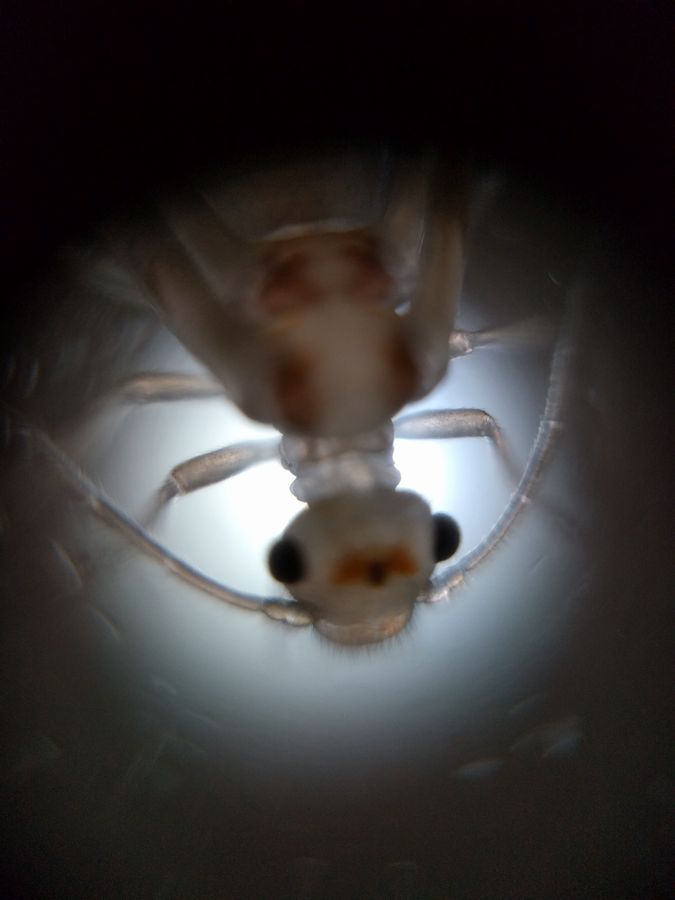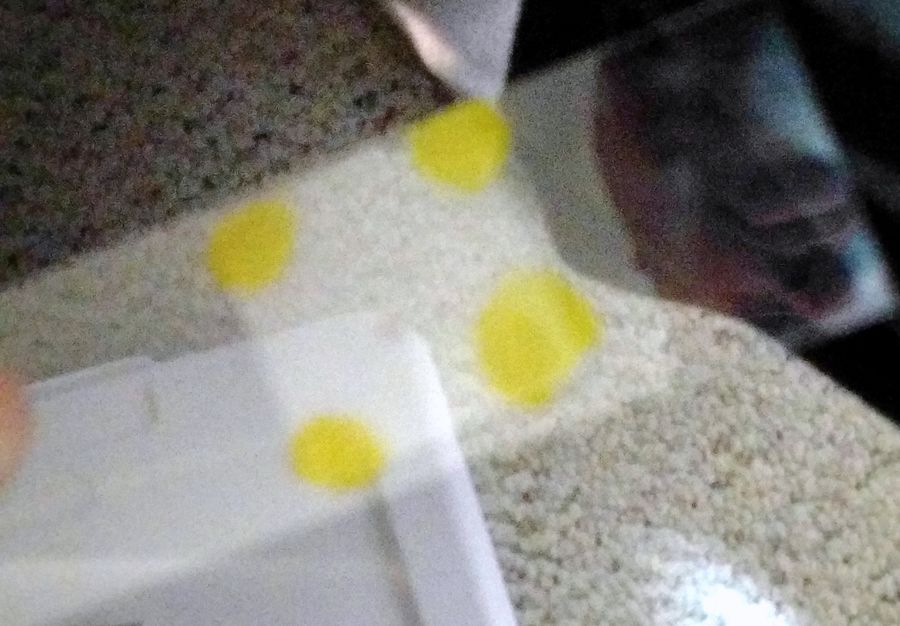Barklice to me “Who said its freezing?”
 Jan 15, 2016 • 5:27 PM UTC
Jan 15, 2016 • 5:27 PM UTC Unknown Location
Unknown Location 140x Magnification
140x Magnification Microorganisms
Microorganisms
laksiyer
Human observer of life. https://sukshmadarshin.wordpress.com
97posts
1255comments
5locations

The past few days have been bone-chilling in the north-east of the USA with temperatures well below freezing point. One would think that life would come to a standstill (at least I felt that this was my end). Not so, as I realized a couple of days ago. As I stirred from my home multi-layered, I couldn’t help thinking how the Holly tree was nice and green and seemed to rejoice the cold. So I inspected some of the leaves where several of them had small insects stuck to their bottom surface. I plucked one where one of the tiny critters was moving, much to my surprise (Cold-blooded! yeah right)

In order to study this, I used Manu’s technique of using silly putty at the four corners of a coverslip and gently pressing the moving insect. For foldscoping, I captured images and videos from two different lenses: 1) the regular lows power 140x and 2) an experimental lens made by Marie which is about 100x in magnification.

Here is a video showing the dorsal and ventral regions of the insect. The silly putty technique is perfect. It stuns the insect just enough, so that it is dazed and you can turn it over without it trying to escape.
My local expert (L. Aravind), confirmed that it is a immature psocid or bark lice with chewing mouth parts and incompletely developed wings. Just next to this was an adult that seemed to be trapped in a webbing. Since some of these spin silk, I wondered if the adult tried to make a coccoon, or perhaps it was trapped by a spider. Note the characteristic wing pattern of the bark louse.
Finally the same leaf had a clutch of eggs, also in a webbing. Wonder if these are pscopteran too. This is my best hypothesis for now.
Bark lice/Book lice belong to the Psocoptera family. They generally feed on algae and mosses and books!. They are related to the parasitic lice found in a variety of vertebrates including mammals and birds. That raises an interesting possibility about the evolution of the parasitic lice lineage. Perhaps a bark lice jumped hosts in a tree dwelling ancestor and found the warm blooded host a better prospect. I cant help but thinking how great it would be if we systematically analyzed all the micro-insects and their associations. I see another database in the making.
Sign in to commentNobody has commented yet... Share your thoughts with the author and start the discussion!

 0 Applause
0 Applause 0 Comments
0 Comments_300x300.jpeg)

















